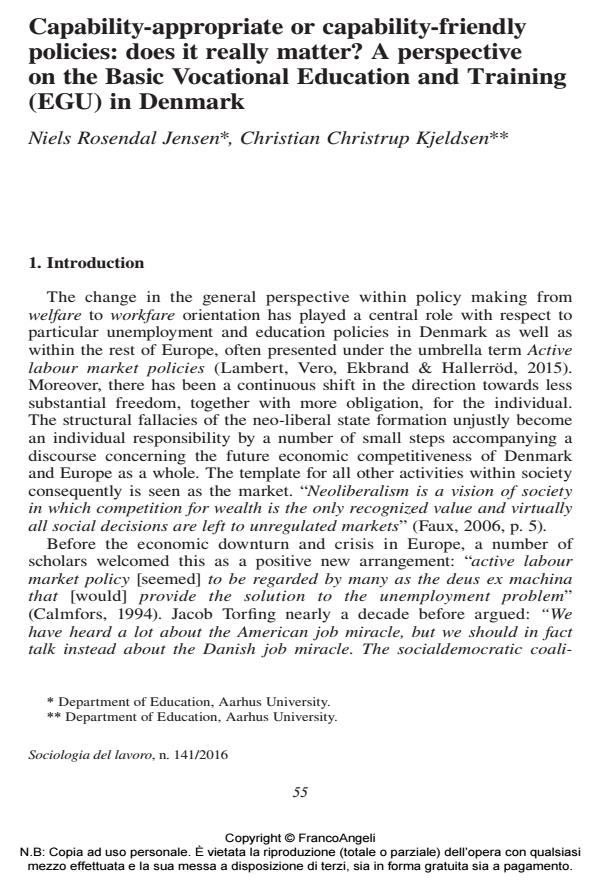Capability-appropriate or capability-friendly policies: does it really matter? A perspective on the Basic Vocational Education and Training (EGU) in Denmark
Titolo Rivista SOCIOLOGIA DEL LAVORO
Autori/Curatori Jensen Niels Rosendal, Kjeldsen Christian Christrup
Anno di pubblicazione 2016 Fascicolo 2016/141
Lingua Inglese Numero pagine 17 P. 55-71 Dimensione file 119 KB
DOI 10.3280/SL2016-141004
Il DOI è il codice a barre della proprietà intellettuale: per saperne di più
clicca qui
Qui sotto puoi vedere in anteprima la prima pagina di questo articolo.
Se questo articolo ti interessa, lo puoi acquistare (e scaricare in formato pdf) seguendo le facili indicazioni per acquistare il download credit. Acquista Download Credits per scaricare questo Articolo in formato PDF

FrancoAngeli è membro della Publishers International Linking Association, Inc (PILA)associazione indipendente e non profit per facilitare (attraverso i servizi tecnologici implementati da CrossRef.org) l’accesso degli studiosi ai contenuti digitali nelle pubblicazioni professionali e scientifiche
L’approccio delle capacita viene ormai adottato come riferimento per diversi programmi europei sulla poverta, l’esclusione sociale, e la giustizia sociale. Principalmente utilizzato come parametro di misurazione delle liberta reali per persone in situazioni di svantaggio, ha anche un impatto rilevante rispetto alla definizione delle politiche poiche spinge politici, datori di lavoro e altri soggetti interessati a sviluppare politiche capability-friendly. Basato su dati raccolti per un’indagine sull’offerta educativa rivolta ai giovani, l’articolo discute se una politica capability-friendly sia sufficiente o se non sia necessario, come gli autori sostengono, promuovere politiche capability-appropriate. All’introduzione segue una sezione che presenta alcuni elementi importanti della transizione dal welfare al workfare, utili per comprendere il contesto in cui vengono definite le politiche per i giovani. La sezione successiva discute lo sviluppo di queste ultime come preludio al caso studio (EGU), che mostra una discrepanza tra l’ideale e la pratica: il livello nazionale sembra caratterizzato da un approccio capability-friendly, mentre l’applicazione locale della politica sembra essere molto distante da questo approccio. Questa discrepanza sembra essere risolvibile solo attraverso l’utilizzo di una politica volta a colmare il divario.
Parole chiave:Approccio delle capacita, educazione, welfare, pay-fare
Jensen Niels Rosendal, Kjeldsen Christian Christrup, Capability-appropriate or capability-friendly policies: does it really matter? A perspective on the Basic Vocational Education and Training (EGU) in Denmark in "SOCIOLOGIA DEL LAVORO " 141/2016, pp 55-71, DOI: 10.3280/SL2016-141004